The crocus flower is famously known as a winter bloomer. That is, you can see these gorgeous blooms peeking out from the snow in late winter, long before the spring flowers start popping out. But if you live in climates where snow isn’t a regular thing, the timing of their blooms might be a real question mark. There are several types of crocuses, too, which bloom at different types, depending on your climate.
How Many Types of Crocuses Are There?
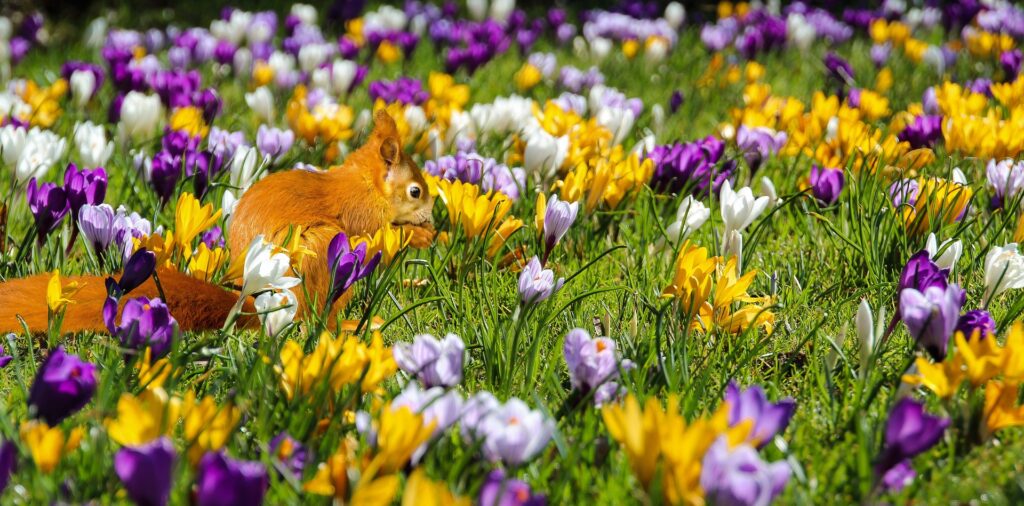
There are many varieties and colors of crocuses that bloom from autumn to spring.
©
Before we dive in, let’s make note that there are more than 100 varieties and species of crocus flowers. Because of this, and because of each one’s climate preferences, the timelines for blooming will vary a little. You may spot some blooming in early October on Aegina Island in Greece but early March in Illinois. Plus, there are autumn-blooming species, too.
There are three main types of crocuses: Dutch crocus (spring bloomers), golden crocus (late winter bloomers), and autumn bloomers (including saffron crocus and Crocus speciosus).
Typical Blooming Season for Crocuses
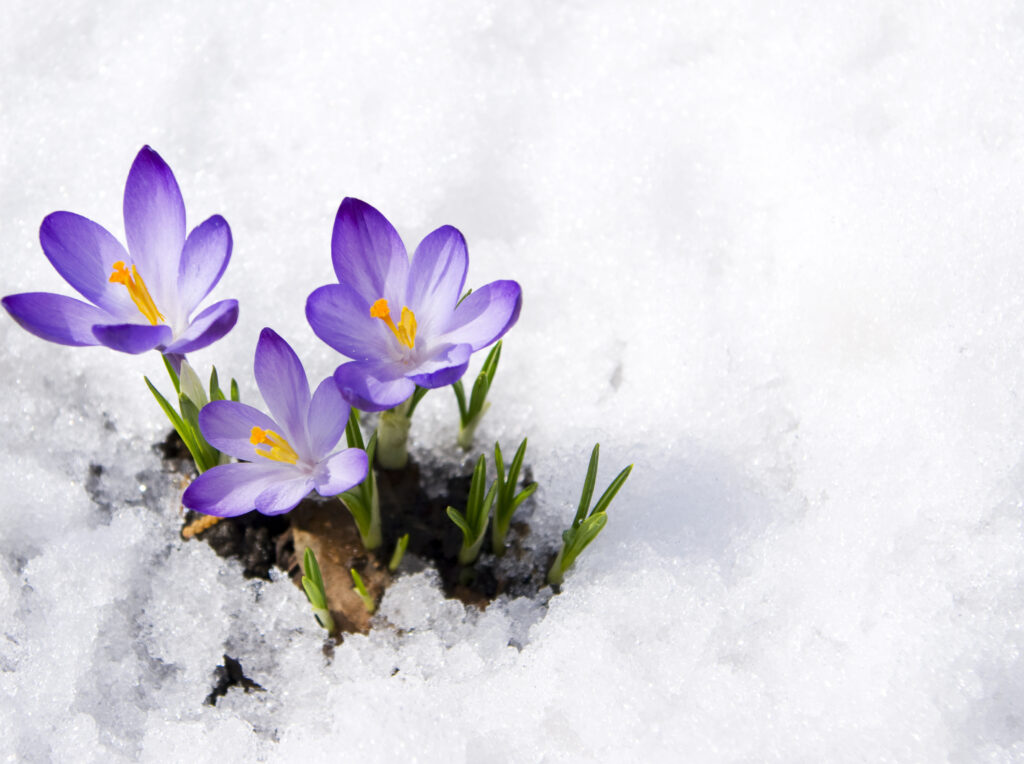
Crocuses often pop up through the snow.
©Volkova Irina/Shutterstock.com
The general blooming time for spring-blooming crocuses may fall anywhere between October and May. Autumn bloomers will pop up in October through as late as early December, while mild regions may see Dutch crocuses blooming as early as January. Spring-only bloomers will begin popping up in March and may go as late as May.
Nothing, Then Hello!

The bloom and foliage emerge at the same time.
©Myriams-Fotos / Pixabay – License
One intriguing thing about crocuses as well is that you may look in the plot or planter where the corms were planted and see absolutely no sign of the plants. Then boom! The next day, there’s a flower blooming. The blooms and foliage emerge from the soil at the same time, so you literally may not even know that the corm has taken root and begin growing until you’re up to your ankles in flowers. Each corm will produce several blooms in fast succession, assuming no trauma occurs to the plant.
Note on Crocuses
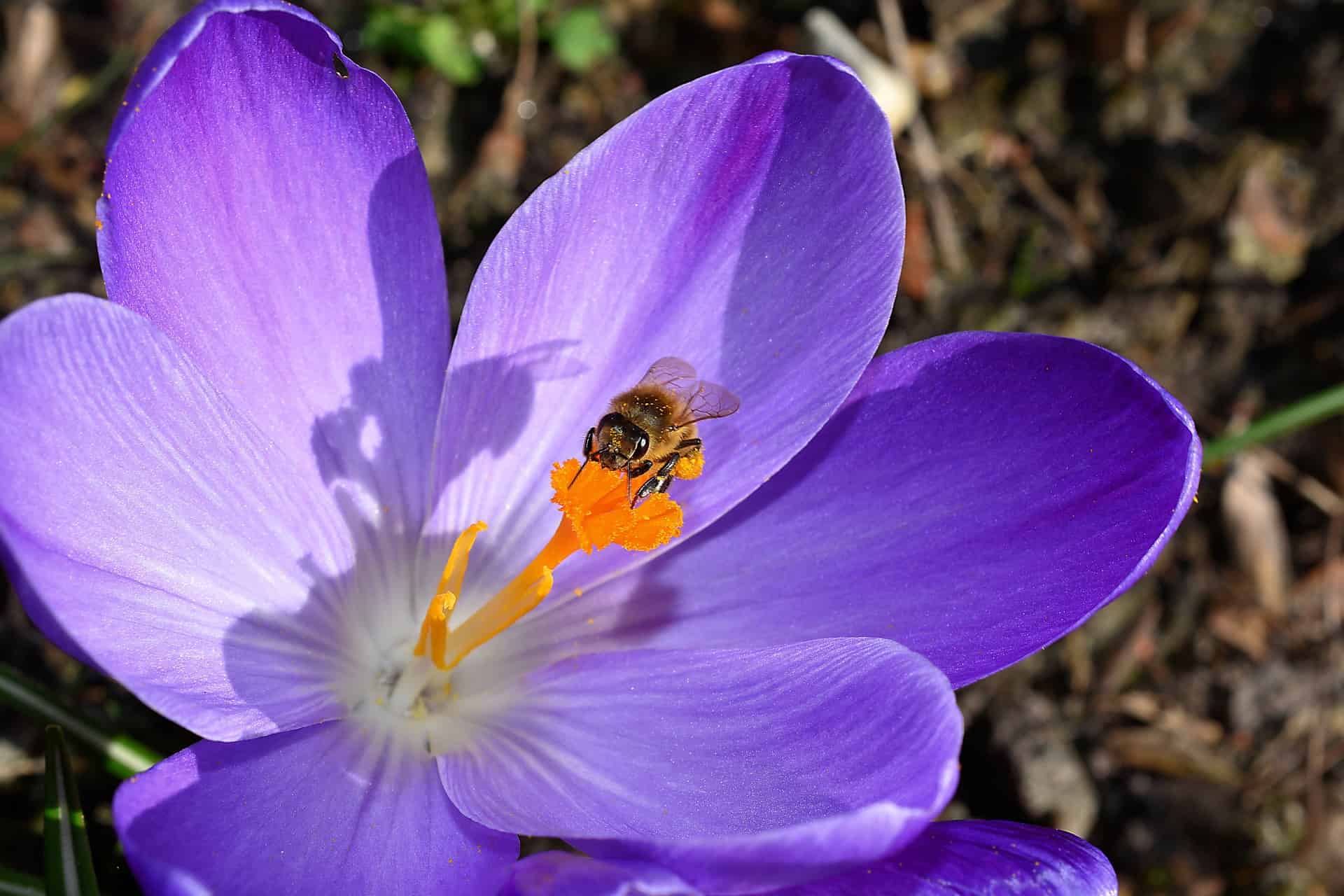
Crocuses attract pollinators and provide much-needed food in early spring and winter.
©
Crocuses are an excellent choice for your bee and pollinator gardens, it should be noted. They provide that first, early food for bees, butterflies, hummingbirds, and other pollinators need to survive the end of winter.
Things That Impact Blooming Time for Crocuses
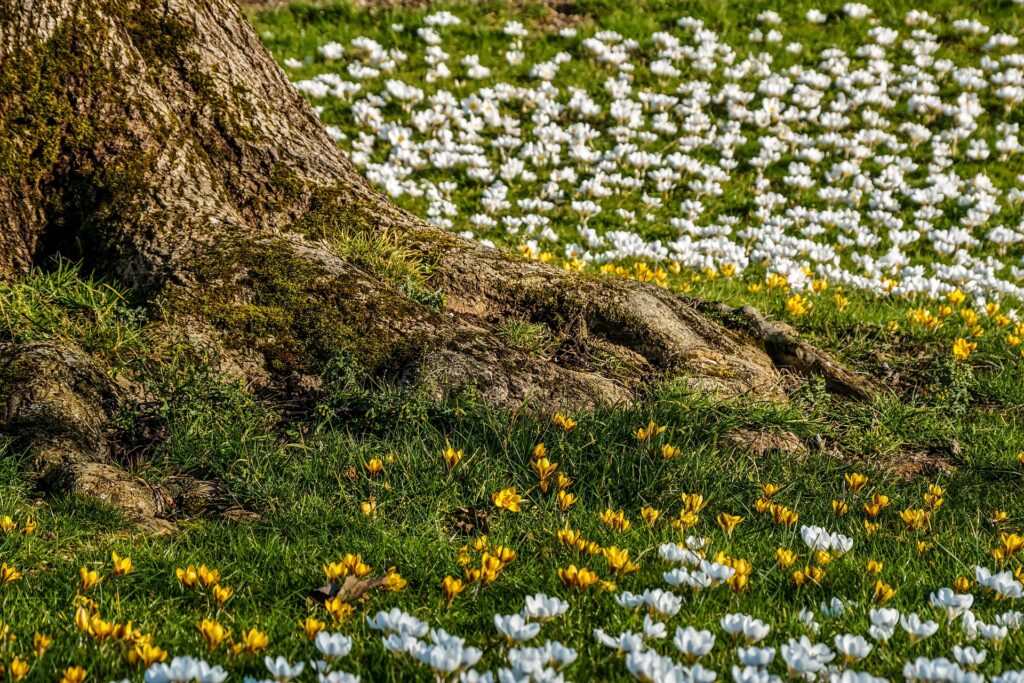
Location can determine a great deal about the timing of blooming for crocuses.
©
There are a few things that impact the time when crocuses bloom.
- Urban/suburban vs. rural: Urban soil tends to be warmer year-round than rural soil, so crocuses are likely to bloom earlier in these areas than out in the countryside.
- Sunny spots: crocuses planted in sunny but protected areas will bloom earlier than those planted beneath evergreens or in shade.
- Plantings near the house: Crocuses planted next to the house also tend to bloom earlier, thanks to the protection the house offers them.
Do Indoor Crocuses Bloom At Other Times?
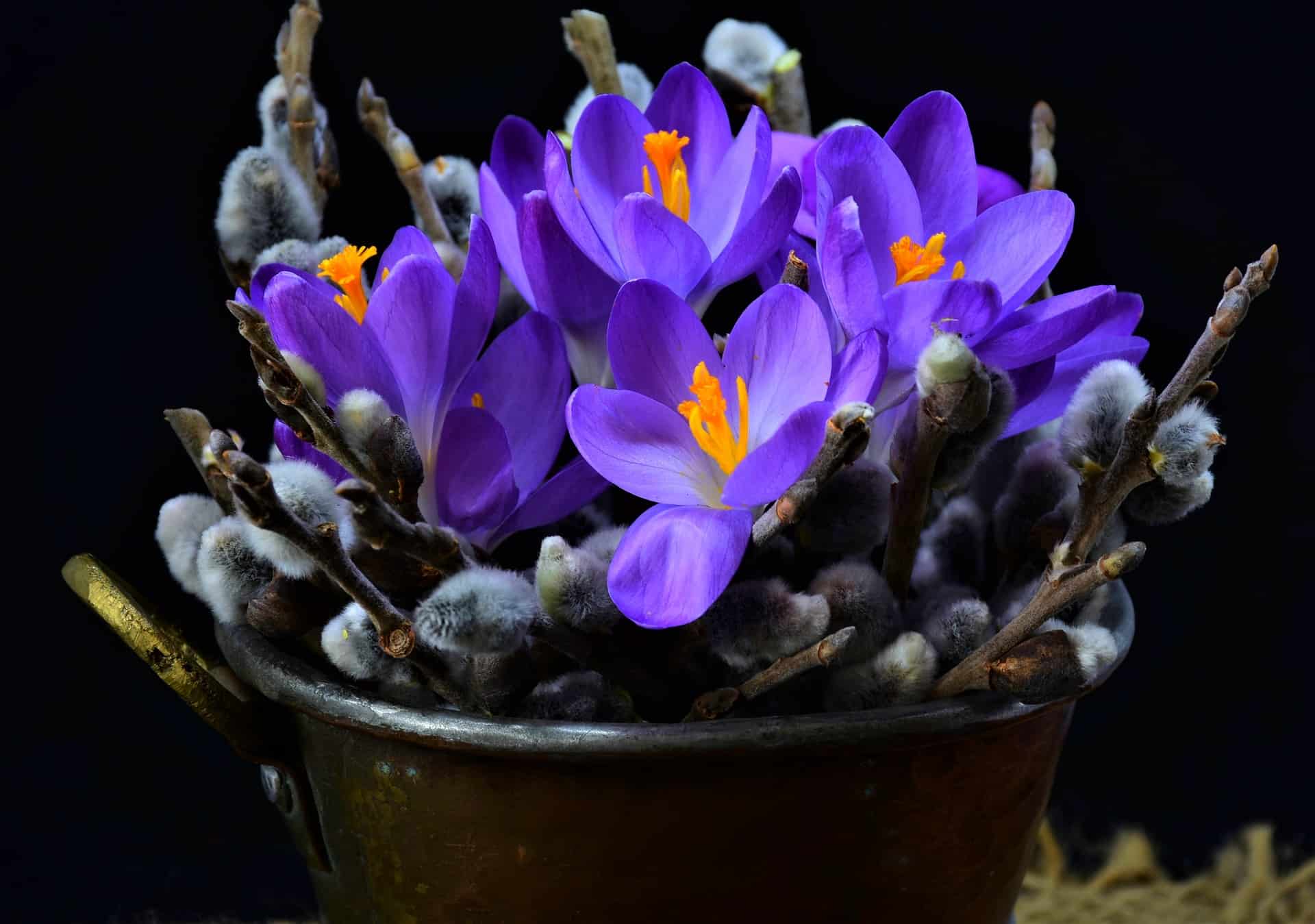
Indoor crocuses may be forced to bloom.
©
Crocuses make for excellent indoor plants and you may actually force them to bloom. In fact, they are one of the easiest indoor cold-hardy corm plants to do this with. White Flower Farm offers a fairly decent tutorial on how to do just this.
Why Aren’t My Crocuses Blooming?
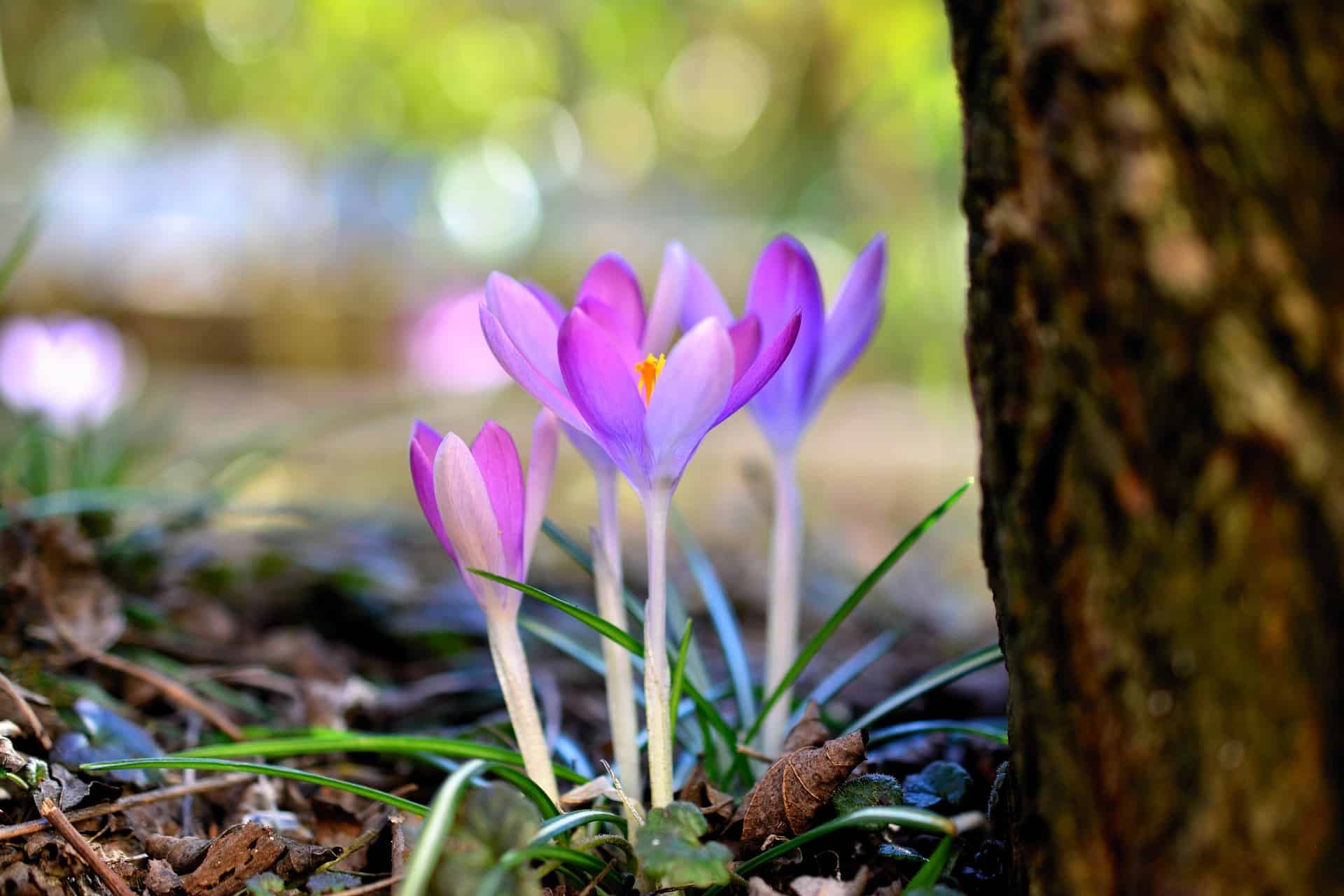
There may be several different reasons your crocuses aren’t blooming.
©
Since crocuses are low-maintenance and extremely cold-hardy plants, they generally bloom without issue. However, if you notice yours aren’t, there are a few potential causes you may be able to deal with and encourage blooming again.
- Check for soggy soil. The flowering plant needs properly draining soil and may develop root rot or fungal infections if the soil is soggy, which in turn keeps the plant from blooming.
- Limit the fertilization. A lot of plants need fairly healthy doses of fertilizers to keep them blooming and thriving. Crocuses, however, are not the kind of plant that need this. If your plant is developing lush greenery and no blooms, chances are you’re over-feeding the plant. Pull back on the fertilizer to help encourage blooming.
- No plant? Check the corm. If you notice that the plants aren’t coming up at all, you may have voles or mice noshing on those corms below ground. Try digging up the area where you planted and see if there are signs of rodent dining. If you do see these signs, plant them in wire bulb baskets, and replant. This prevents rodents from getting to them.
The photo featured at the top of this post is ©
Thank you for reading! Have some feedback for us? Contact the AZ Animals editorial team.






